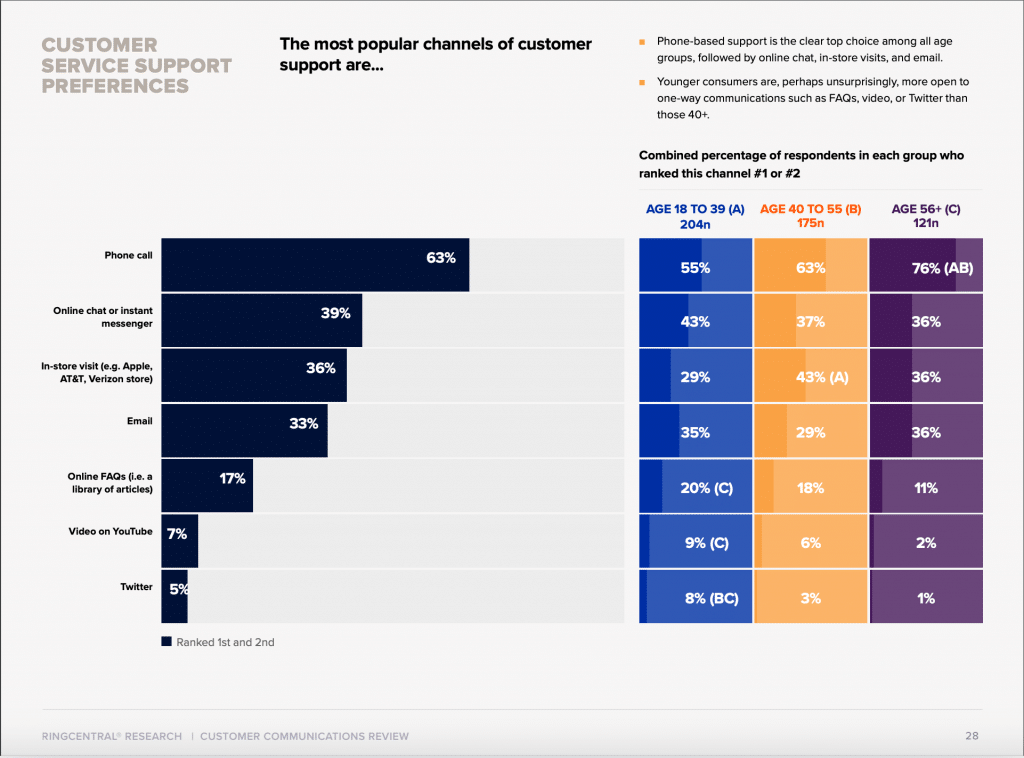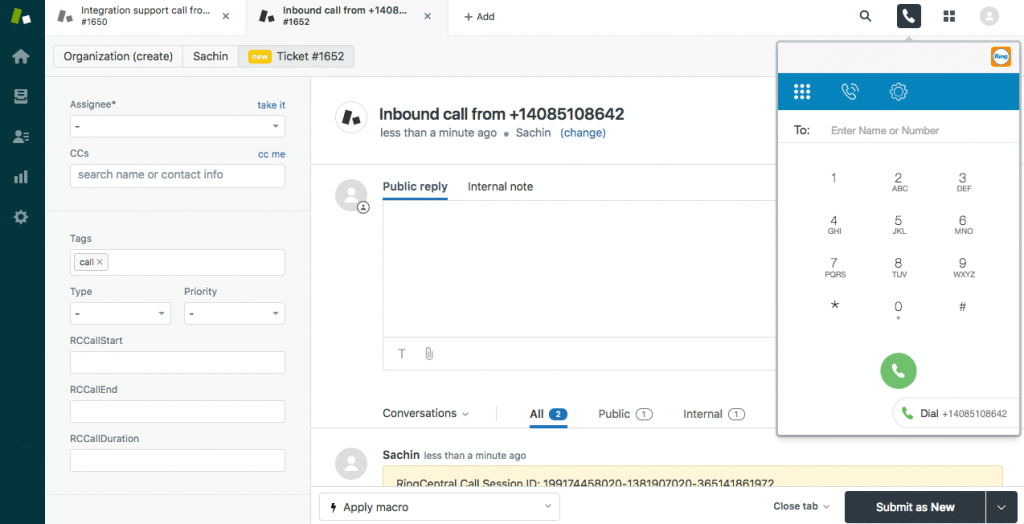For most brands these days, improving customer experience (CX) is the ultimate holy grail.
Good customer experience is what everybody wants—even if you’re just hailing an Uber for a 10-minute cab ride or buying a single-ply tissue roll from a supermarket chain.
This is a massive change from the days when customer experience was mostly limited to upscale services like going to Disneyland or buying a diamond ring from Tiffany & Co.
But over the last two decades, the internet has penetrated all aspects of our lives and pushed many businesses to move their services online.
The result: more and more brands are beginning to offer a seamless digital customer experience to meet growing customer expectations online.
In this post, we’ll slice and dice a few key topics to understand the different ways in which you can improve your company’s customer experience—often, without needing to make a huge financial investment upfront:
- Why bother improving customer experience? What are the benefits?
- 3 ways to measure customer experience
- 4 tips for improving customer experience
- 3 examples of how companies have improved their customer experience
🔍 Access Metrigy’s free report to learn more about the 2022 state of customer experience technology.
What are the benefits of improving customer experience?
Despite being the smartest species on planet Earth, sometimes we humans aren’t very good at making decisions.1 It’s especially challenging for, say, customers to choose between a plethora of brands and products that offer look-alike features, benefits, and pricing.
So we do what we are best at. We use our heuristics—aka mental shortcuts—to filter out “bad choices” based on our experiences.
It means that instead of making rational decisions, we sometimes rely on our emotional cues, like gut feelings, biases, and stereotypes. That’s why we bank so much on an “educated guess” or a “rule of thumb.”
Good customer experiences are shortcuts like that too—they’re a way for us to like and trust a brand because we had a rewarding experience with them.
Everything else—like product, price, and features—are table stakes for customers.
No wonder 86% of buyers are willing to pay more for a better customer experience.2
From a company’s perspective, your customer experience is one of your best shots at getting a good return on investment. But instead of telling you why we think so, we’ll let the numbers do the talking.
On average, brands that are invested in improving customer experience see benefits like these3:
- 42% improvement in customer retention
- 33% improvement in customer satisfaction
- 32% jump in cross-selling and/or up-selling
Good customer experience can also make a buyer five times more likely to buy from a brand again or recommend it to other people.4
Pretty impressive, right? In contrast, the downsides of bad customer experience are pretty ugly, too:
- 78% of consumers abandon a purchase decision because of a bad experience.5
- 91% of unhappy customers will not willingly do business with your company again.6
Translation? These numbers point to the fact that improving customer experience does a lot for your bottom line, from boosting your customer retention rate to reducing your cost of marketing and sales.7
But first, if you want to improve your customer experience, you have to be able to measure how your customers feel about interacting with your business.
[ebook-download title=”How customer-obsessed is your business?” link=”https://netstorage.ringcentral.com/documents/quiz_how_customer_obsessed_your_business.pdf” cta-text=”Take the quiz” src=””]
3 ways to measure customer experience
Brands often talk about their customer experiences using adjectives like “tailored” experiences, “personalized” interactions, and “customized” service.
Sounds intimidating, but customer experience is actually a relatively easy-to-measure business metric. And that’s great because—as you might’ve heard—if you can measure it, you can manage it.
Here are three important metrics that you should use measure—and manage—to improve your customer experience:
1. Customer happiness
It’s a no-brainer. Happy customers are the hallmark of a good customer experience.
But CX can be a subjective experience that varies from one customer to another. So what should you do to make sure your customer experience is consistent across the board? Well, the first step is to ask.
Survey your customers soon after every service interaction to see if there are any gaps in how your team delivers on the customer experience.
You can use tools like Google Forms or Typeform to get customer feedback and calculate your customer satisfaction (CSAT), Net Promoter Score (NPS), or customer effort score (CES).
Apply that feedback to improve the CX when you find glaring inconsistencies or negative patterns in your customer survey results.
If you’re already using a contact center solution like RingCentral Contact Center, you don’t need to pay for another tool—it comes with a surveys feature.
2. Customer churn
Customer churn is one of the most depressing metrics for any business. Calculating your churn rate tells you the percentage of customers who stopped using your products or services every month or every year.
Here’s the easiest formula to calculate your monthly churn if you were to calculate it for the month of July:
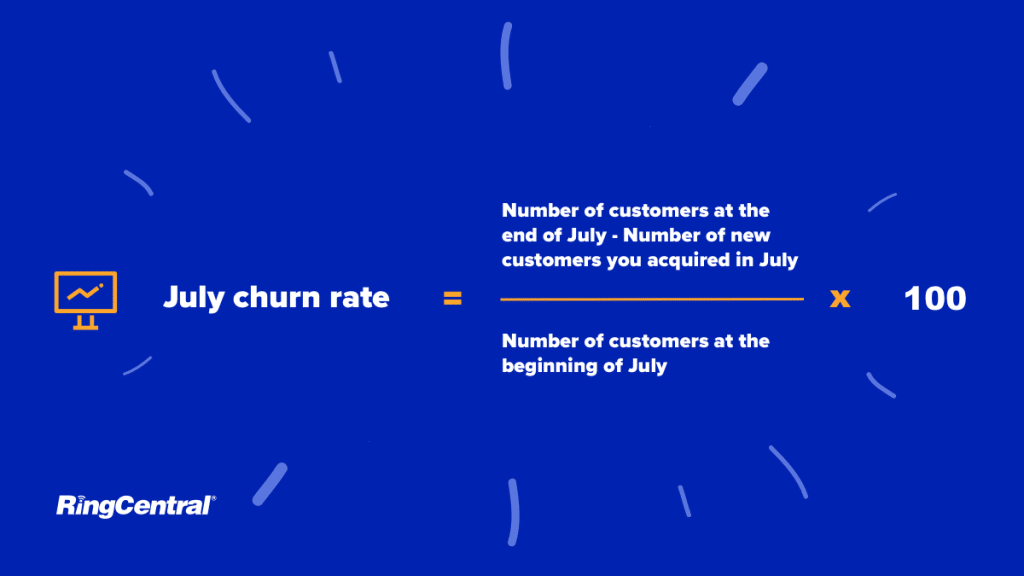
The silver lining to measuring churn is you can use these learnings to improve the opposite metrics (like customer retention and customer loyalty).
While customers leaving or churning out is inevitable for almost every business, you can minimize it by taking certain measures.
For instance, you could trigger a short exit survey in an email to every customer who decides to close their account or leave your business. Like this one:

If you find that lots of ex-customers are selecting “price” as the reason for quitting your brand, you might want to devise a strategy to either lower your price or provide more value for what you’re charging.
3. Customer lifetime value
Customer lifetime value (CLV) is maybe the most important metric used to measure customer experience because it encompasses all other CX metrics in it (like retention and loyalty).
CLV is the prediction of the net dollar value that you can get out of your customer—for as long as they stay with your brand.
It’s also the calculation of your customer’s worth to your business—not just in terms of dollar value, but also in terms of your brand’s relationship with them.
Here’s a simple formula to calculate customer lifetime value—you can usually measure your CLV by doing a simple back-of-the-napkin calculation or using a basic calculator:
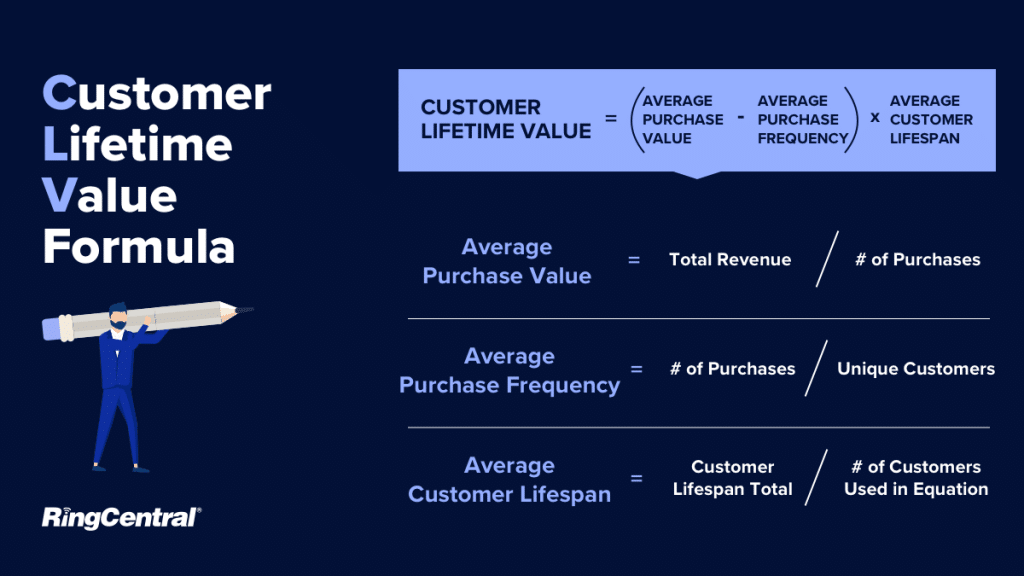
There are a few different ways to increase CLV. You could take simple steps like switching your product billing cycle from monthly to yearly (to increase the likelihood that customers will stick around longer) or offering point-based loyalty programs.
These are both good ideas, but the best way to improve your CLV is to bake an awesome customer experience into your company’s DNA. Make sure that you’re exceeding expectations and delighting your customers at all stages of their customer journey—not just up to the point when they decide to buy from you.
That means you have to look beyond just material incentives like referral points and discounts—there’s a customer relationship component to it too.
4 ideas to improve the customer experience
Once you have an understanding of where the gaps are in your brand’s customer experience management, you can now look at ways to improve it further.
Here are our four tips on how to do that.
1. Improve your employee experience
While customer experience sounds like it’s all about your end buyers, the seeds of good CX are actually often sowed in your brand’s home turf—meaning you need to build a good employee experience (EX) for your team too.
According to Gallup’s data, the more your employees are engaged at work, the better it is for your brand’s business outcomes.8
Makes sense, right? Happier employees, happier customers. And employee experience encompasses the whole range of interactions that your employees have with your company—starting from the day they take the job interview to the time they go through the exit interview process.
It’s important that your brand makes each of those experiences as rewarding for your staff as possible.
Use workforce optimization (WFO) strategies to help your employees become more efficient—and increase customer satisfaction too.
For instance, RingCentral’s Contact Center solution lets you gamify your call center experience to make your agents’ jobs more fun and interactive:

Here are a few tips on other ways to use gamification to motivate your employees:
- Use employee engagement apps to make it fun for your team to get involved and make suggestions on how to improve the business.
- Make it a game for your reps to earn virtual badges, swag, or redeemable points when they achieve certain benchmarks related to good customer service.
- Set up a jumbo dashboard that visualizes and tracks your team’s individual performances in real time.
- Or split your call center team into smaller groups and invite them to participate in team-level challenges to crush goals in exchange for rewards.
2. Invest in building long-term relationships
One of the fundamental mistakes that most businesses make is that they put revenues ahead of the employee and customer experience.
That’s like putting your cart before the horse; the cart can’t drive itself.
EX and CX are drivers of growth. When the two are in sync, profit becomes a natural byproduct.
But what exactly does it mean to put EX and CX before revenue?
It’s actually pretty simple. It means you have to direct all your energies in building genuine, long-term relationships with your customers.
You have to foster an environment for your employees to connect with customers at a human level—instead of just looking at them as leads, accounts, or sales opportunities. (Zappos is famous for doing this well.)
One of the best things your business can do to create world-class customer experience, even if you don’t have the biggest budget in the world, is to hire the right people. From choosing teammates with good customer service skills to nurturing customer service teamwork in your day-to-day, people are absolutely key.
Whether you have fancy technology and automated customer service or not, having the right people is the easiest way to improve your customer experience.
Come to think about it, there shouldn’t be just one business function in your company that’s responsible for a good customer experience either.
Customer experience should be everyone’s job. Whether their role is customer-facing or not, it should be on everyone’s minds. From things like the purchasing process, to signing contracts, to the on-hold wait time, everyone has a hand in answering this question: How can we make this a better experience for our customers?
Learn more about customer service best practices.
3. Use the right tools to monitor and improve CX
The thing about customer experience is it’s not a one-time target you can just hit and forget.
If you downloaded an industry report about call center metrics in 2010 and expect to be able to follow that advice through 2021—we’d wager that you’re in for a surprise.
That’s the reality of most customer-centric functions—customer service metrics tend to be moving goalposts that you have to keep up with.
For instance, while phone calls are still the most popular channel of communication for customers, live chat is quickly catching up to become a second favorite for customers across all age groups.
We recently ran a survey and found some interesting observations about the change in customer service expectations. Specifically, phone calls are still the most preferred customer service channel overall at 63%—with online chat a distant second at 39%:
That’s a big “Yes” to prove that phones still rule the roost in customer service.
But this data also shows that you can’t ignore the growing popularity of digital touchpoints such as live chat, social media, and self-service.
What does this mean for your brand in trying to improve customer experience?
That you have to keep measuring it, refining it, and trying out new things to keep up with the fast-changing industry.
Luckily, having the right tools in your toolkit can help you see the problems and fix them before they become too big to handle.
When it comes to measuring customer experience—the more granular and specific your data is, the better you understand the performance of your teams and processes. So, use an analytics platform that helps you gain insights on how you can offer better customer experience to people calling you through phone lines.
Choose a helpdesk tool that automatically records customer data or logs in their information from past conversations, such as from your customer relationship management (CRM) software.
Leverage your tools to get continuous insights instead of gleaning patterns out of one-time studies.
The beauty of using these tools is that you can come up with your own customized reports and analytics that every team involved in your CX management process can interpret in their own terms.
For instance, your customer service team can trigger an NPS survey at the end of every service interaction to know how customers feel about the quality of your customer support.
If you fare too low in the NPS, it’s time to go back to the drawing board and make necessary improvements.
Your product engineering team can embed the CES survey as part of a new feature launch in your software product. If you get a lukewarm response from your customers, it’s a signal for your product team to either strip down the feature or make it more practical for the users.
This technique allows all these teams an opportunity to make immediate course corrections and improve the customer experience along the way.
So consistently measure how your customers are reacting to your brand interactions and look for opportunities to maximize positive experiences and minimize negative ones.
4. Make the customer experience convenient for, well, your customers
There are three tenets to a good customer experience:
- Ease
- Emotion
- Effectiveness
If you weave these components of CX into a single thread, here’s what that might look like:
The ease and effectiveness with which a customer gets value out of your brand and feels emotionally fulfilled about the whole experience.
Here’s a visual graph of what customers think are the most important factors in their customer experience:
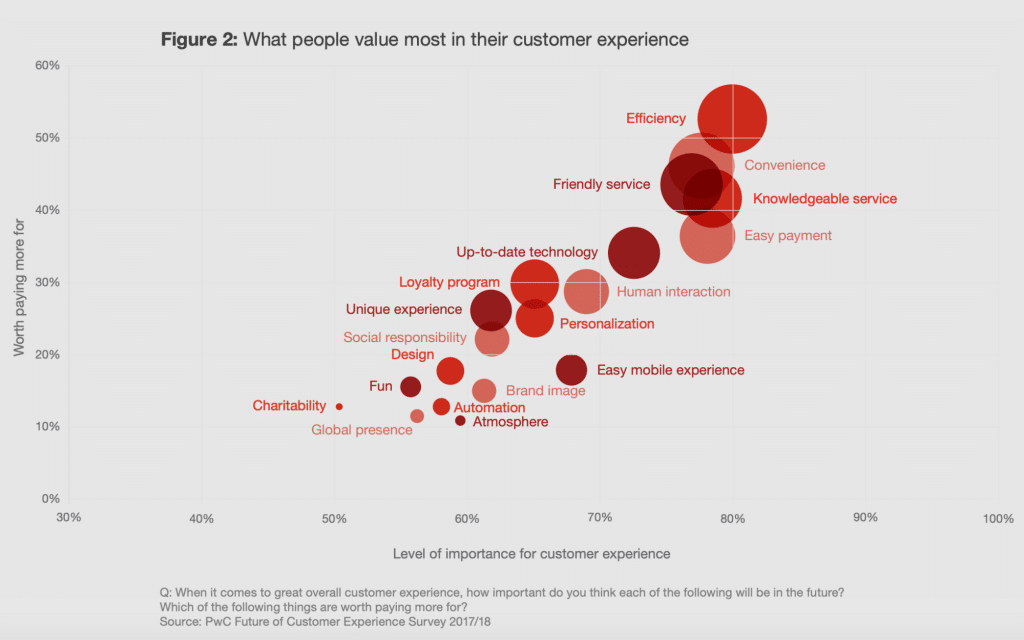
Those biggest high-flying bubbles at the top? Yep, they’re all about the efficiency of your brand and the level of convenience you can offer to your customers.
Everything else that you see in the lower terrain of the graph can somehow map to the three tenets listed above.
So what does this mean for you? What can your brand do?
Well for one, lower the friction in a customer’s journey when they’re interacting with your brand.
When someone calls your customer support team, don’t make them go through a confusing loop of IVR options.
Put people over processes and protocols. Communicate to your customers on their terms. Remember, your policies should enable good CX—not become roadblocks to it.
Make sure your customer service software can integrate with or “talk to” each other.
One big benefit of using customer service apps that integrate with each other is that it takes a lot of manual work off your hands. Some integrations will automatically send, say, a log of your latest conversation with a customer from your phone system to your CRM software. Now, you don’t have to copy and paste repetitive data.
Another benefit of hooking up your phone or communication system to your CRM? You can see your customer’s history and past interactions on your screen with your business when they call, which makes for smoother customer interactions. Plus, you can call them directly from your computer screen too.
Here’s how it looks in Zendesk’s integration with RingCentral, for example:
3 examples of how real-life companies improved customer experience
Concepts like customer experience, customer loyalty, and customer engagement are all pretty abstract ideas—so, here are some examples of how real companies did it. (And here are some examples of B2B customer service, if you’re selling to businesses and not consumers.)
1. Patagonia
Since its early days, Patagonia’s brand values have been deeply rooted in three things: building the highest quality products, saving the planet, and breaking down conventions.9
For an activewear apparel brand that started as a small company to scale as a 2,000-employee strong global workforce, Patagonia has done exceptionally well to improve its customer experience as it grows.
But it wasn’t always like this. In the 1990s, Patagonia went through an unexpected financial crisis and was forced to lay off 120 of its employees—one-fifth of its workforce back then.
The brand quickly realized that it had to readjust its priorities and take unconventional measures to get back on its feet.
It did, and years later today, Patagonia checks all the boxes in terms of delivering a good customer experience.
For instance, its employee turnover rate is about 4%—a freakishly low stat in the retail clothing industry. It might be because Patagonia encourages employees to break conventional workplace barriers and disregards corporate hierarchy when it comes to welcoming new ideas. This empowers its employees to do what is right for a customer in order to offer them a remarkable customer experience.
Patagonia also makes the most of technology to help its staff be more efficient, manage customer data more effectively, and offer a consistent, uniform customer experience across all channels.10
Patagonia understands that its customer demographic is young adventure junkies whose lives transcend into digital spaces. So the brand is making moves to transition itself to a digital-first company and meet its customers where they are: online. This is smart because it appeals not just to its digital native customers, but also attracts future employees who are equally tech-savvy.

Patagonia evokes environmentalism and sustainability in its brand messaging to create a certain emotional experience in its customers. Note the consideration of an online experience in the QR code.
This—in combination with the brand’s love for environmentalism—is one reason why Patagonia has some of the most forward-thinking customers who are also fanatical brand loyalists.11
2. Starbucks
When Starbucks opened its first coffee shop in 1971, it was just another coffee shop in a Seattle neighborhood next to a fish market.
But the brand soon realized that just offering good coffee wasn’t going to cut it for them. So they started improving their customer experience in areas that other coffee outlets hadn’t even thought about.
The brand pioneered a digital flywheel strategy, mastering the four elements of customer experience—easy payments, easy ordering, personalization, and loyalty rewards:12
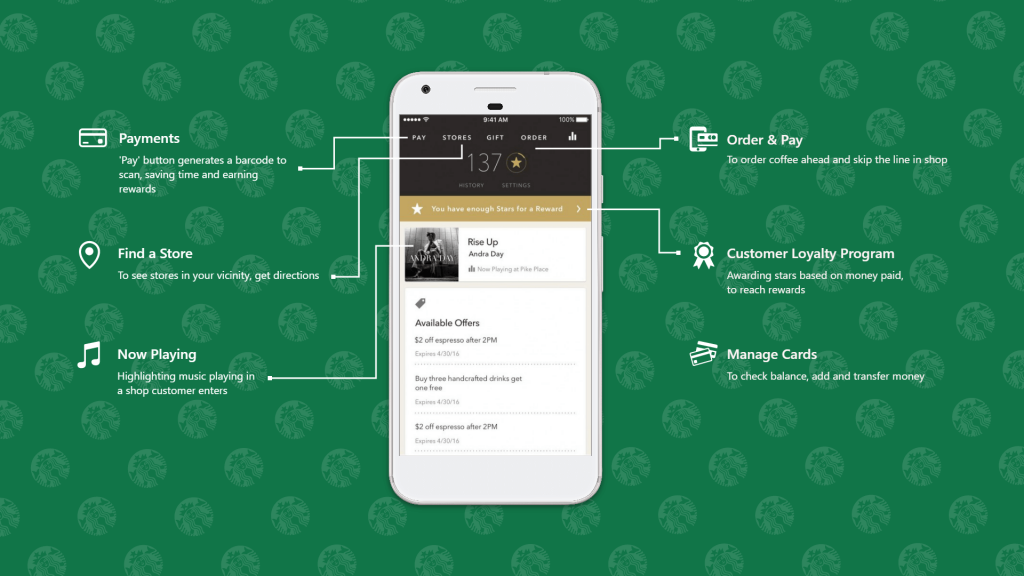
Starbucks offers a great customer experience through its mobile app, which creates a better customer experience offline.
Over the years, the brand has garnered so much popularity that 40% of coffee shops in the US are Starbucks stores13.
But that’s not the most impressive part of their growth. In China, a new Starbucks opens every 15 hours14.
And their loyalty membership program is just through the roof—approximately twice as many as the number of residents in Michigan15.
The funny thing is, if you were to ask a Starbucks fan what they like about their favorite coffee shop, the answer won’t always be “coffee.”
For Starbucks fanatics, it’s the whole experience of going to the Starbucks—the patio-like atmosphere, interacting with the baristas who are always friendly, free Wi-Fi, and maybe the new (and expensive) drink that they just can’t get anywhere else.
And oh, they might also joke about their names that Starbucks barista (knowingly) misspelled16.
And here’s how the brand is leveraging technology to improve on its customer experience. Starbucks recently rolled out its now-signature pickup-only store, to give its busy customers a chance to enjoy their favorite Starbucks beverages while on the go.
If you’re a customer, all you need to do is open up your Starbucks app on your smartphone, order your drink, and get it from the barista in the pickup counter.
It’s a bold move for a coffee chain that earned a name for itself by offering a beloved in-person coffee experience.
For most Starbucks customers today, it’s become part of their daily experience to stand in long queues or sit in an overcrowded coffee store full of strangers. But Starbucks chose not to sit on its laurels and stick to its status quo service delivery.
The brand already offered a great omnichannel customer service for customers to place an order from their smartphones and pick it up from the nearest store.
Now, it’s improved the customer experience even more while keeping up with changing customer expectations.
Check out these examples of good customer service.
3. FedEx
FedEx is in the business of logistics—and among the thousands of things that the company ships, it’s also really good at delivering customer experience.
FedEx is an industry leader in offering a great customer experience because it tightly packages all aspects of a good CX—ease, efficiency, and dependency—right into its service delivery.
But it wasn’t always this easy for a company that was born amidst the economic downturn—just when the oil embargo of 1973 had begun.
Fuel scarcity meant the company couldn’t fly all the planes in its fleet to ship important packages to its customers on time. The company was on the brink of closure for the next two years.
But the company pushed through its struggles—it lobbied the American government to get four million gallons of jet fuel through the government’s fuel rationing program. Most importantly, the brand stuck to the promise it made to its customers:
“FedEx—when it absolutely, positively has to be there overnight.”
Once it overcame the economic crisis and ramped up its global operations, FedEx started applying innovative ideas to improve its operational efficiency and offer better customer service.
For example, in 1979, FedEx became the first company to offer a “tracking number” for customers who could call FedEx customer service to check the location of their packages.17
In 1986, the company developed a prototype of a handheld barcode scanner for its delivery drivers to share tracking information on their truck terminals.18
And in 1994, they launched FedEx.com—the first-of-its-kind service that allowed customers to process their shipments online and track the shipment status in real-time.19
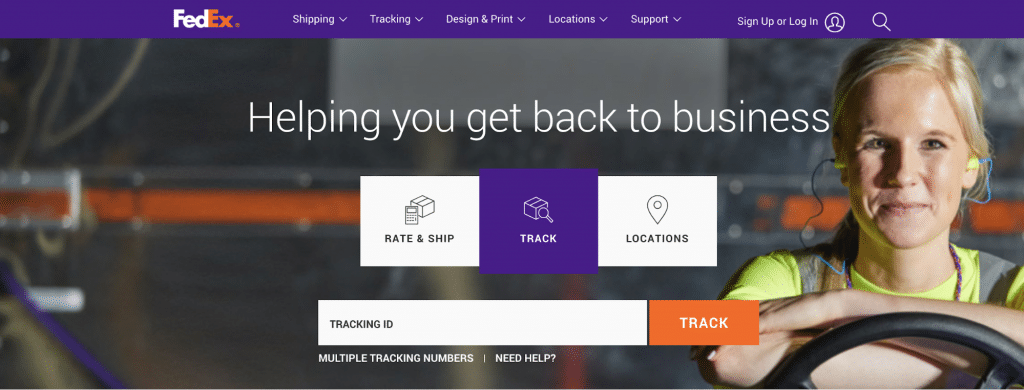
FedEx’s focus on continuously improving its customer experience has earned it the status of the second most trusted and recommended brand in the US—right after Amazon and eight places higher than its closest rival, UPS.20
Ready to improve your customer experience?
Customer experience is a very personal thing.
While your customers need just one bad interaction to abandon your brand (often without warning), you need to hit the right chords on delivering good CX at all times.21
Good customer experience is what differentiates a good brand from the mediocre ones. It helps customers develop a mental model to pick their favorite brands and keep others at bay.
Let’s face it. We are in the thick of an “experience economy.” That’s why you have to embed good CX into all areas of your brand’s growth strategy: product, distribution, and customer service.
After all, good CX has a direct correlation on all the profitable business metrics—customer retention, brand loyalty, and customer lifetime value.
1 psychologytoday.com/us/basics/decision-making
2 smartinsights.com/user-experience/customer-experience-management-cxm/the-complete-guide-to-a-great-customer-experience
3 drift.com/customer-experience/
4 experiencematters.blog/category/roi-of-customer-experience
5 glance.net/us/en/blog/wp-content/uploads/2015/07/Counting-the-customer_-Glance_eBook-4.pdf
6 slideshare.net/ekolsky/cx-for-executives
7 stratfordmanagers.com/customer-experience-advantages
8 gallup.com/workplace/236927/employee-engagement-drives-growth.aspx
9 patagonia.com/core-values
10 cloudblogs.microsoft.com/industry-blog/microsoft-in-business/retail/2018/02/22/how-patagonia-transformed-the-customer-experience-in-the-cloud
11 customerthermometer.com/customer-retention-ideas/brand-loyalty-statistics-2017
12 digirupt.io/starbucks-digital-flyweel-strategy-continues-to-pay-off
13 dailycoffeenews.com/2019/10/25/nearly-four-of-every-five-us-coffee-shops-are-now-starbucks-dunkin-or-jab-brands/
14 cnbc.com/2017/12/05/starbucks-is-opening-a-store-in-china-every-15-hours.html
15 vox.com/the-goods/2020/2/27/21145969/starbucks-coffee-drinks-stores
16 brandwatch.com/blog/react-starbucks-spelling-your-name-wrong
17, 18, 19 fedex.com/gb/enews/2018/new-year/the-past-present-and-future-of-fedex-innovations.html
20 industryweek.com/supply-chain/article/22010545/the-ten-most-trusted-brands-in-the-us
21 pwc.com/us/en/services/consulting/library/consumer-intelligence-series/future-of-customer-experience.html
Originally published Apr 15, 2020, updated Jan 16, 2024


